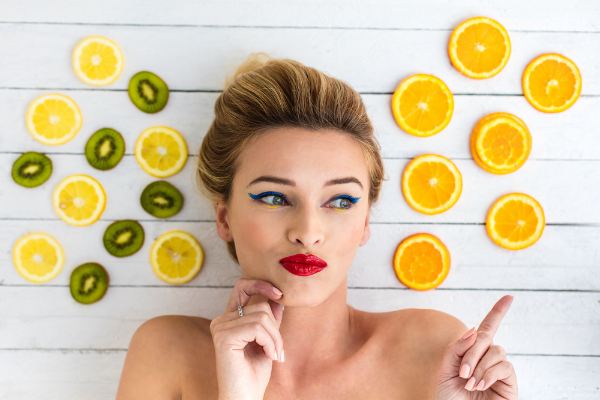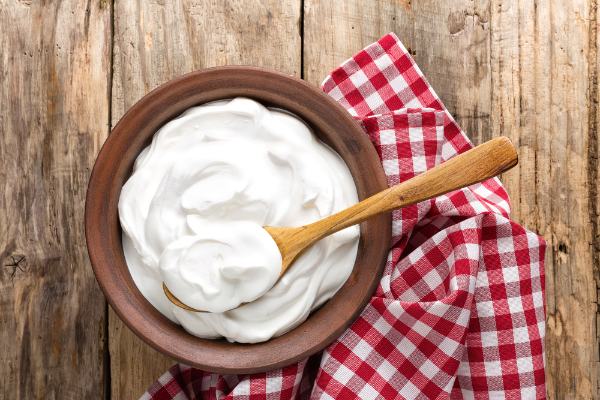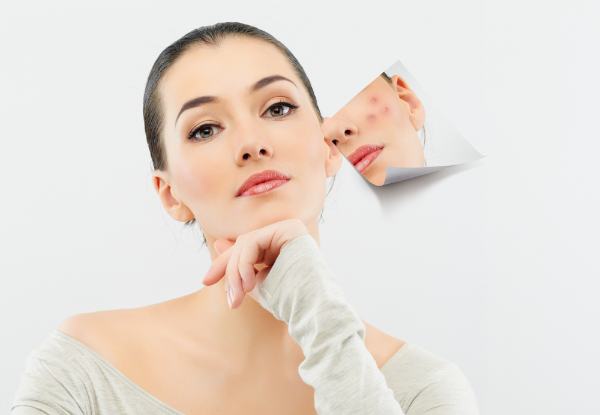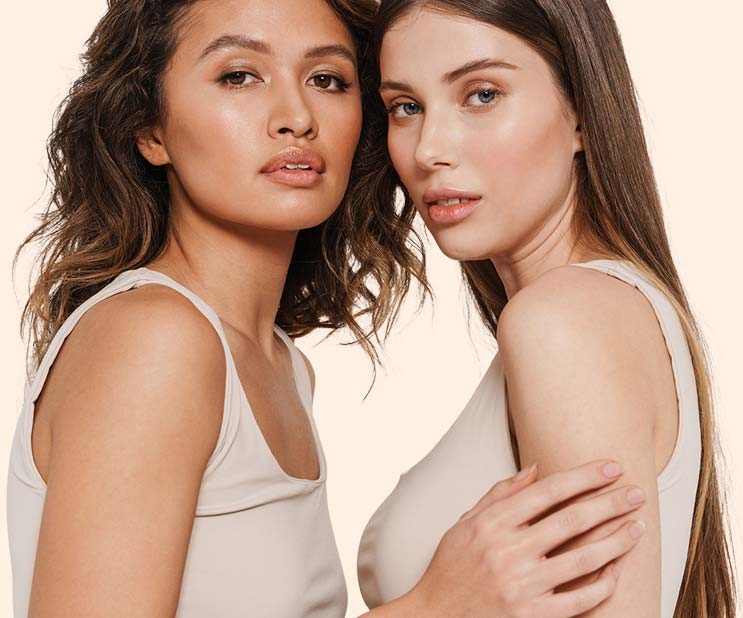As you get older, past your puberty years, you’re probably expecting your pimples to go away. Unfortunately for some people, acne can continue well into adulthood, and your diet has a lot to do with it.
This article will tell you what you need to know about adult acne, its causes, and the best diet for acne elimination.
1. What Is Adult Acne?

Adult acne is a breakout or appearance of inflamed pores, large pimples or cysts that are typical in adolescents, but this time occurring in adults.
By adults, I mean people who are past their teenage years or are well in their twenties. Some adults can still get acne even when they are already in their 30s, 40s, or even 50s.
In some cases, people can also develop acne for the first time during adulthood, a condition called adult-onset acne. This is most common in menopausal women.
According to research, breakouts happen in 35% of females in their 30s, 26% in their 40s, and 15% in their 50s or older years.
2. What Causes Adult Acne?

Adult acne can be caused by a variety of factors that can be associated with your lifestyle or certain bodily changes you undergo during adulthood.
-
Hormones
An excess of androgen hormones such as testosterone that triggers oil production is the main cause of adult acne, according to Dr. Julia Tzu from Wall Street Dermatology.
In women, hormonal fluctuations can be due to conditions like polycystic ovarian syndrome or PCOS, pregnancy, menstrual cycle, menopause, and birth control pills.
-
Stress
Research shows that acne breakouts due to abnormal androgen hormone levels are our bodies’ way to respond to stress.
According to Dr. Neal Schultz of Beauty Rx Skincare, an organ called adrenal gland also produces a stress hormone called cortisol along with testosterone during stressful situations. This encourages oil production by your oil glands, which can lead to acne.
-
Pollution
Dr. Schultz also adds that air pollution adds a layer of dirt on your skin, which can clog your pores or mix with oil on your skin, leading to acne.
-
Using The Wrong Products
If you have combination or oily skin type, you should use oil-free, water based and non-comedogenic hair and skin products. This ensures that they won’t clog your pores and worsen your risk of having acne.
-
Over-Washing
Cleaning and washing your face too intensely or too frequently using harsh, abrasive products can also dry up your skin and trigger excess oil production.
-
Diet
Finally, what you eat could be causing your acne. Although it has not yet been proven that dairy, greasy fried food, chocolate, nuts, and caffeine can cause acne, there are of course exceptions. If a certain food causes your acne, then stop eating it.
Excess iodine, which is found in shellfish and some greens like spinach and kelp, can also cause acne. Sugars, on the other hand, boosts insulin production, which in turn trigger male hormones for oil production.
3. How Is The Food You Eat Related To Acne?

An anthropologist, Loren Cordain, has decided that our diet affects acne, after observing that the Canadian Inuit population only started developing acne once they began eating processed foods. Since then, his question of why this happens took over his studies.
His encounter with many other researchers and articles have led him to conclude that a diet composed of no refined carbs or processed grains and lots of plant-derived food can be the solution to acne.
A study from the American Journal of Clinical Nutrition in 2007 found that a low-glycemic diet significantly lowered skin lesions and improved insulin sensitivity.
A similar study in Korea in 2012 also produced similar results, with smaller oil glands and less inflammation in men on low-glycemic diets.
Milk, especially the fat-free kind has also been found to alter insulin production, according to a study in the Harvard School of Public Health involving 47,000 dietary questionnaires. The study associates total milk intake with acne.
Many dermatologists and skin experts also suggest dairy-free, low glycemic, high in vegetable diets to help clear out acneand improve skin complexion.
Related:- DIFFERENT TYPES OF ACNE, LEARN WHAT ACNE TYPE YOU HAVE & ITS TREATMENT
4. Diet For Adult Acne

Just as much as what you eat is affecting your skin, an adult acne diet can be the solution to your skin woes! Here are some of the foods that you should incorporate into an acne clearing diet.
-
Green And Leafy Vegetables

First and foremost on the list of food for your diet to clear acne is greens. These include spinach, Swiss chard, beet greens, collard greens, kale, herbs, and more!
These are packed with nutrients and vitamins that help fight acne. Spinach and kale are excellent sources of iron, calcium, and Vitamins A and C. Spinach also provides vitamin E.
Include greens in your regular meals by adding them to smoothies and salads for a yummy, nutrition-packed anti acne diet.
-
Low-Glycemic Food

Unlike high-glycemic foods, low-glycemic foods do not cause sudden spikes in your blood sugar levels. This makes them a great addition to your adult acne diet.
Food with glycemic indices below 55 like sweet potatoes, vegetables, beans or legumes, fruits, multigrain bread, and barley should be your top picks.
Eliminate high glycemic food like white bread, soft drinks, baked potatoes, chips, pretzels, and other junk food from your diet. These have glycemic index scores of 70 or higher and can cause a series of reactions that promote acne.
-
Non-Dairy Milk

Even fat-free milk, in fact, especially fat-free milk has been associated with acne. The proteins in milk combining effects with hormones are most likely the culprits. Instead of dairy milk, try almond milk, which is a low-glycemic dairy alternative.
There are also other choices like soy milk, rice milk, coconut milk, and hemp milk.
-
Antioxidant-Rich Food

Research shows that antioxidants reduce oxidative stress and lessen acne breakouts. These include antioxidants found in green tea and vitamin C that is found in citrus fruits and berries.
-
Omega-3 Fat Rich Fish

Inflammation associated with acne can be decreased by consuming foods rich in omega-3 fatty acids. A popular choice is oily fishes like salmon and other seafood.
Other food choices like walnuts, soybeans, spinach, chia seeds, and flaxseed oil also have high omega-3 contents.
-
Seeds

Aside from providing high doses of omega-3 fatty acids, seeds like pumpkin seeds, chia seeds, sunflower seeds and flaxseeds contain vitamin E and zinc. They also help reduce skin inflammation and are nice additives to smoothies and salads.
-
Yogurt

According to the gut-brain-skin theory, probiotics help good bacteria in your gut reproduce, which can help clear out acne breakouts. One food that’s rich in probiotics is yogurt. Opt for the sugar-free kind or Greek yogurt for you to eat as a snack or as an ingredient in a salad dressing.
5. Quick Tips To Get Rid Of Adult Acne

Other than diet, other factors mentioned previously also add to your acne problem. Here’s what you can do about them:
- Use a gentle cleanser only once or at most, twice daily to avoid having dry skin. Coarse cleansers that are grainy of gritty or those that rub the skin can promote acne instead of preventing it.
- When washing your face, use cool or warm water and a soft, baby wash cloth or cleaning brush. Lather or clean your skin for about thirty seconds.
- Pat dry your skin, never rub it. This can lead to wrinkles and strip your skin from the moisture that it needs.
- Over the counter lotions or creams can also help clear up your skin. Choose spot treatments with sulfur, non-comedogenic cleansers with salicylic acid or mild acne fighters with benzoyl peroxide.
A great product that you should try is Tru Alchemy Glow Serum. It is an acne treatment serum that cleans, disinfects, and helps clear up breakouts and blemishes.
So there you have it! Follow these tips and adult acne-eliminating dietto get the smooth skin you’ve always been dreaming of!
“Hope you find the post helpful and we are excited to hear what you think of it!”;






